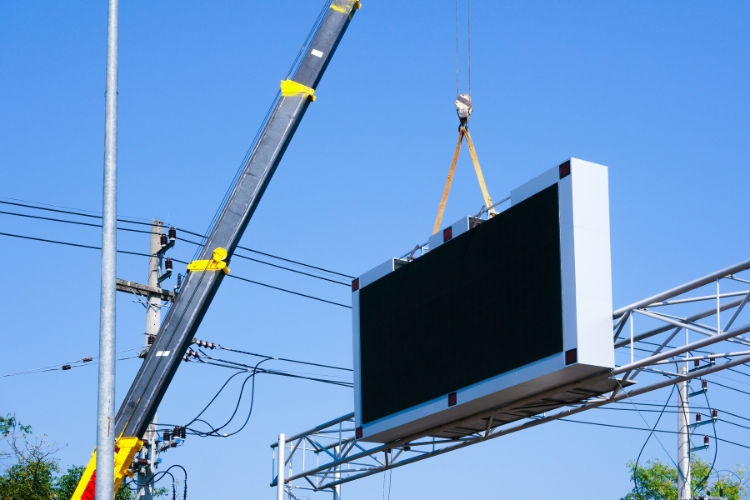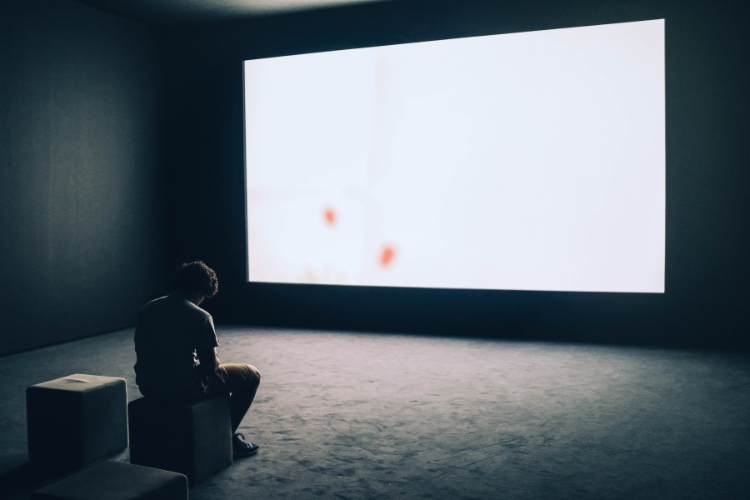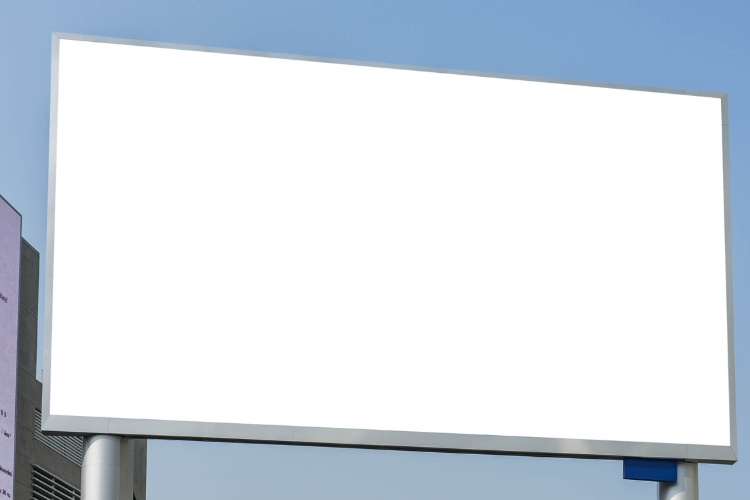Choosing between Indoor and Outdoor SMD screens is crucial for ensuring optimal display performance and longevity. Indoor screens offer high-resolution visuals suitable for controlled environments, while outdoor SMD displays are built to withstand harsh weather and deliver high brightness for visibility under direct sunlight. This guide compares their technical features, use cases, installation needs, and cost factors—helping you make a smart, tailored decision based on your environment, viewing distance, and budget.
Key Takeaways!
| Factor | Indoor SMD Screens | Outdoor SMD Screens |
|---|---|---|
| Brightness | 500–1000 nits, good for controlled lighting | 2000–5000+ nits, suitable for direct sunlight |
| Pixel Pitch | 1.5mm–4mm, high resolution for close viewing | 4mm–10mm, visible from long distances |
| Durability | Lightweight, not weatherproof | Rugged, IP65+ weatherproof design |
| Installation | Easy and lightweight installation | Requires strong mounting and weatherproof setup |
| Power Consumption | Lower due to lower brightness | Higher due to intense lighting and components |
| Use Cases | Malls, conferences, retail displays | Billboards, stadiums, outdoor events |
| Cost | Generally more affordable | Higher upfront investment for durability |
What Are Indoor SMD Screens?
A. Environmental Suitability
Indoor SMD screens are specifically designed for controlled environments. They function best in places where light conditions are stable, and there is minimal exposure to dust, heat, or moisture.
B. Key Features
-
Finer Pixel Pitch: Shorter distance between LEDs results in high-resolution imagery.
-
Moderate Brightness: Typically between 500 and 1000 nits, ideal for indoor lighting conditions.
-
High Image Quality: Clear, vibrant visuals for close-range viewing.
-
Sleek Design: Lightweight and modern construction to complement indoor aesthetics.
-
Quiet Operation: Usually fan-less, allowing for silent functioning in professional environments.

C. Benefits of Indoor SMD Screens
-
Enhanced visual clarity at short distances.
-
Lower power consumption, reducing electricity costs.
-
Easy installation and maintenance.
-
Improved integration into architecture and interiors.
D. Common Use Cases
-
Shopping malls
-
Airports and transport hubs
-
Corporate boardrooms and conference centers
-
Museums and exhibition halls
-
Indoor sports arenas
-
Retail displays
-
Educational institutions
What Are Outdoor SMD Screens?
A. Environmental Suitability
Outdoor SMD screens are engineered to endure harsh environments. They are built to resist:
-
Direct sunlight
-
Heavy rainfall
-
Dust and pollution
-
Wind and fluctuating temperatures
B. Key Features
-
High Brightness Levels: Ranging from 2000 to 5000+ nits for clear daytime visibility.
-
Weatherproof Construction: Typically IP65 or higher, protecting against water and dust.
-
Robust Build: Strong materials ensure durability against physical impacts and temperature extremes.
-
Larger Pixel Pitch: Allows for long-distance visibility.
-
Wide Viewing Angles: Ensures screen visibility from multiple directions in open spaces.

C. Benefits of Outdoor SMD Screens
-
Excellent daylight readability.
-
Long-lasting durability in tough weather conditions.
-
Ability to engage large, dispersed audiences.
-
Low maintenance needs despite high performance.
D. Common Use Cases
-
Highway and roadside billboards
-
Stadiums and sports arenas
-
Outdoor concert venues
-
Public squares and transport terminals
-
Political rallies and public service announcements
-
Real estate project hoardings
-
Outdoor branding installations
Indoor vs. Outdoor SMD Screens: A Side-by-Side Comparison
| Feature | Indoor SMD Screens | Outdoor SMD Screens |
|---|---|---|
| Brightness | 500 – 1000 nits | 2000 – 5000+ nits |
| Pixel Pitch | 1.5mm – 4mm | 4mm – 10mm |
| Resolution | Higher for close viewing | Lower, suitable for distance |
| Durability | Basic | Rugged, weatherproof |
| IP Rating | Typically IP20 | IP65 or higher |
| Power Consumption | Low | High |
| Viewing Distance | Short-range (2-10 ft) | Long-range (10+ ft) |
| Cost | Generally lower | Generally higher |
| Use Case | Indoor settings | Outdoor/public spaces |

Technical Specifications at a Glance
Here’s a quick look at the most important technical differences:
-
Brightness
-
Indoor: 500–1000 nits
-
Outdoor: 2000–5000+ nits
-
-
Pixel Pitch
-
Indoor: 1.5mm to 4mm
-
Outdoor: 4mm to 10mm
-
-
Weather Resistance
-
Indoor: IP20 (no water protection)
-
Outdoor: IP65+ (dust and water resistant)
-
-
Viewing Angle
-
Indoor: 120–140°
-
Outdoor: 140–160°
-
-
Power Consumption
-
Indoor: 300–600W/m²
-
Outdoor: 600–1000W/m²
-
-
Lifespan
-
Indoor and Outdoor: 50,000–100,000 hours depending on usage and maintenance
-
Choosing the Right SMD Screen for Your Needs
To make a smart investment, consider the following:
1. Environment
-
Will your screen be placed in an area exposed to weather or indoors?
-
Is there sunlight or ambient light that could affect screen visibility?
2. Viewing Distance
-
Indoor screens are ideal for close-up viewing.
-
Outdoor screens are better for long-distance readability.
3. Brightness Needs
-
High brightness is critical for outdoor readability during daytime.
-
Indoor applications do not require intense brightness.
4. Budget Considerations
-
Indoor displays are less expensive due to simpler design and features.
-
Outdoor displays are costlier upfront but offer durability and reach.
5. Customization
-
Many suppliers offer bespoke screen solutions with flexible sizing, resolution, and software integration.

Common Applications and Solutions
A. Digital Signage
-
Used in retail outlets, restaurants, and airports for promotions and updates.
-
Often combined with content scheduling software.
B. Video Walls
-
Combine multiple SMD screens into seamless large displays.
-
Common in command centers, exhibitions, or corporate environments.
C. Digital Billboards
-
Highly visible for roadside and outdoor advertising.
-
Equipped with brightness sensors to adjust for time of day.
D. Flexible Screens
-
Can be bent or curved to fit architectural features.
-
Great for creative indoor installations or modern building facades.
Investment and Cost Factors
1. What Affects the Price?
-
Type (Indoor/Outdoor)
-
Pixel pitch and resolution
-
Screen size
-
Weatherproofing level
-
LED quality and brand
-
Customization and design
-
Mounting hardware and structure
2. General Trends
-
Indoor screens are cheaper due to fewer technical requirements.
-
Outdoor screens demand higher investment for durability and brightness.
-
Choose value over price—low-quality screens may lead to costly repairs and poor audience impact.
Installation and Maintenance Tips
A. Installation
-
Indoor Screens:
-
Lightweight
-
Wall-mounted or embedded
-
Simple electrical setup
-
-
Outdoor Screens:
-
Require sturdy structures
-
Often involve cranes or brackets
-
Must account for wind load and weatherproof cabling
-
B. Maintenance Best Practices
-
Indoor:
-
Dust with a dry microfiber cloth
-
Avoid liquid cleaners
-
-
Outdoor:
-
Use mild cleaning agents
-
Check weather seals and ventilation
-
Clean debris from vents and surfaces
-
C. Maximizing Lifespan
-
Regular checkups
-
Avoid screen overuse at max brightness
-
Use automatic brightness control features

Working with a Reliable Supplier
Why It Matters
Choosing a trusted supplier ensures:
-
High-quality screens
-
Installation support
-
Warranty coverage
-
After-sales service
What to Look For
-
Transparent pricing
-
Genuine LED components
-
Positive customer reviews
-
Experience in both indoor and outdoor screen projects
Relevance in Pakistan
Pakistan is witnessing a growing demand for SMD screens due to:
-
Retail modernization
-
Real estate marketing
-
Corporate branding needs
-
Public infrastructure improvements
Working with a local, reliable partner ensures smoother installation, service, and pricing.
Conclusion: Which One Is Right for You?
Choosing between indoor and outdoor SMD screens depends on your application, audience, and environment.
-
Choose Indoor SMD Screens if your installation is in a controlled environment where high resolution and aesthetics are key.
-
Opt for Outdoor SMD Screens when your goal is to attract attention in public spaces under challenging lighting and weather conditions.
Both screens serve a unique purpose, and choosing the right one ensures optimal performance, audience engagement, and ROI.
If you’re unsure, consult with a professional supplier who can guide you through the process, from site assessment to installation and after-sales support.
❓ FAQs
1. What is the main difference between indoor and outdoor SMD screens?
Indoor SMD screens are designed for controlled lighting environments with higher resolution and finer pixel pitch, offering crisp visuals at close range. Outdoor SMD screens, on the other hand, are built for visibility in bright daylight, featuring higher brightness, weatherproofing, and rugged construction to withstand environmental challenges.
2. Can I use an indoor SMD screen outdoors if the area is covered?
Not recommended. Even if the area is partially sheltered, indoor SMD screens are not weatherproof and can’t handle humidity, temperature changes, or indirect sunlight for long durations. Outdoor screens are specifically engineered to handle such variables safely.
3. How do I choose the right pixel pitch for my SMD screen?
It depends on the viewing distance:
-
For close-range viewing (indoor): go for 1.5mm to 4mm pixel pitch.
-
For farther distances (outdoor): opt for 4mm to 10mm or more.
The smaller the pitch, the higher the resolution, but also the higher the cost.
4. Are outdoor SMD screens more expensive than indoor ones?
Yes, generally. Outdoor SMD screens cost more because they require:
-
Higher brightness levels
-
Weatherproof enclosures
-
More durable materials
This added protection and functionality reflect in the pricing but offer long-term value in harsh conditions.

